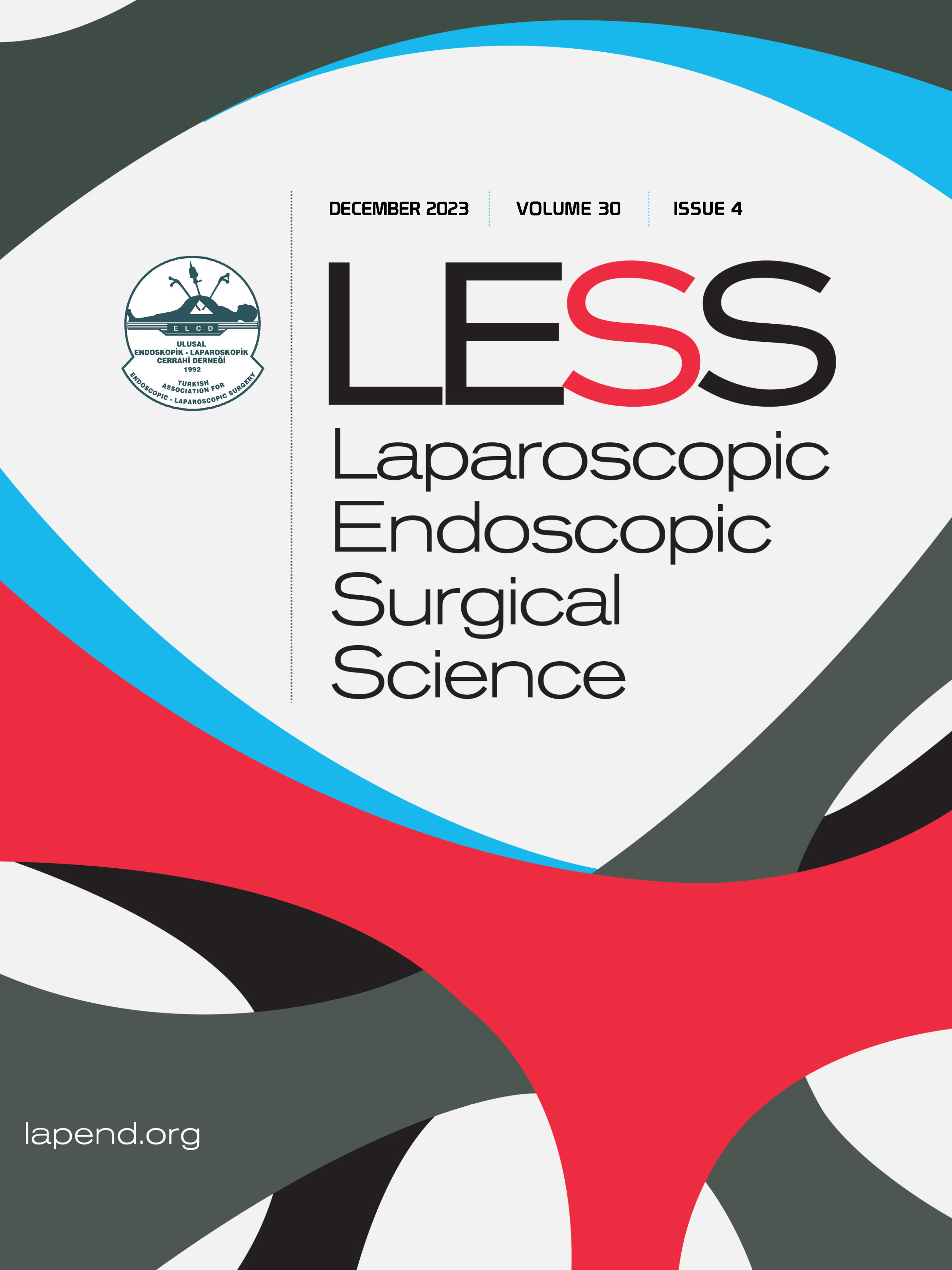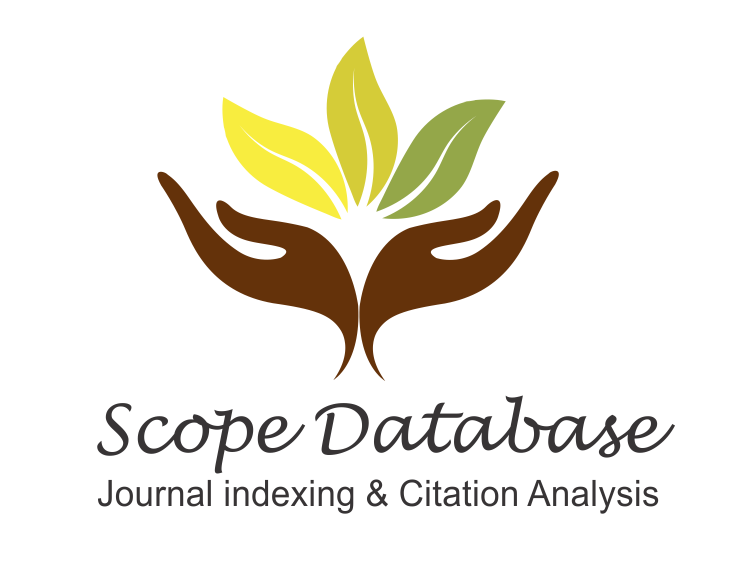Volume: 11 Issue: 4 - 2004
| REVIEW | |
| 1. | Rectal prolapse and approach of minimally invasive treatment Sezai Demirbaş, Cengiz Erenoğlu, Tuncay Çelenk Pages 149 - 156 Although rectal prolapse is not a life-threatening disease, it is a disease with some complaints such as constipation and incontinence which affect quality of life and social life negatively. Both the nature of symptoms and the availability of a large scale of treatment modalities necessitates attention of surgical community. As minimally invasive surgery takes place in the treatment of different surgical diseases, laparoscopic surgery has also been available for the treatment rectal prolapse successfully. In this review article, rectal prolapse has been summarized in the view of the recent data. |
| RESEARCH ARTICLE | |
| 2. | Laparoscopic common bile duct exploration: an effective treatment in the management of biliary tract stones Ali Aktekin, M A. Tolga Müftüoğlu, Mehmet Odabaşı, Abdullah Sağlam Pages 157 - 162 INTRODUCTION: Nowadays, the short and long term complications of endoscopic retrograde cholangiopancreaticography and endoscopic sphincterotomy are well known and the success rate of the procedure is debatable. Laparoscopic cholecystectomy and synchronous common bile duct exploration give the opportunity of one step procedure and is a good alternative procedure for common bile duct stones. METHODS: The medical records of 9 patients with cholecytocholedocholithiasis who ere treated with laparoscopic cholecystectomy and laparoscopic common bile duct exploration between November 2002 and May 2004 in our clinic were studied. RESULTS: Sex distribution was 5 women and 4 men with median age 60 years(24-91). The laparoscopic exploration of the common bile duct was begun through cystic duct in 5 patients, but in only 2 of them ended by this way. In 3 other patients, the exploration was done via laparoscopic choledoctomy. In four patients, common bile duct exploration was done through the choledochotomy incision. In one of these patients conversion to laparotomy because of an impacted stone in distal common bile duct was necessary. We have only one complication as bile leakage responded to medical treatment. The average operation duration was 160 minutes and hospitalization period was 5 days. There was no mortality. DISCUSSION AND CONCLUSION: We concluded that the laparoscopic common bile duct exploration and removing of stones is a succesful and practical procedure in selected patients. |
| 3. | Videothoracoscopic (VATS) approach to recurrence primary spontaneous pneumothorax. Is stapler necessary for smanll bulla and blebs? Alpay Örki, Çağatay Tezel, Şenol Ürek, Altuğ Koşar, Hakan Kıral, Canan Dudu, Bülent Arman Pages 163 - 168 INTRODUCTION: To evaluate the effectiveness of electrocoagulation of bulla/blebs and apical pleurectomy via videothoracoscopic approach by VATS. METHODS: We reviewed 2 1 patients who underwent VATS procedure for recur rence pneumothorax from 1996 to 2003. There were 16 male and 5 female patients with a mean age of 30 years. The percentage of pneumothorax was calculated mean of 60% (British Thoracic Society Guideline -2003). Sixteen (76%} bulla/blebs were found at the videothoraco scopic exploration with the mean diameter of 15 mm (5-30). RESULTS: As an operative procedure, bulla ablation with cauterization and apical pleurectomy was performed in 16 patients. Five of the patients underwent only pleural abrasion because in this group there was not any either bulla or bleb could be found.The mean duration of drainage time was 4.8 days. There was no mortality and complications occurred in 3 (14%) patients. Only one (4.7%) recurrence occurred during the median 26 months (5·76 months) follow-up. DISCUSSION AND CONCLUSION: Videothoracoscopic bulla ablation with apical pleurectomy is a safe method for recurrence primary spontaneous pneumothorax. Especially, if the bulla or bleb is smaller then 20 mm the ablation via cauterization reduces the expenses of VATS procedure by avoiding the use of stapler devices. |
| CASE REPORT | |
| 4. | Laparoscopic approach in Morgagni diaphragmatic hernia Mustafa Yüksel, Hasan F. Batırel, Tunç Laçin Pages 169 - 173 A 77-year-old female was admitted to our unit with vomiting and dyspnea. She also had essen tial thrombocytosis and hypertension. The chest CT and upper gastrointestinal contrast study showed a Morgagnidiaphragmatic hernia with part of the stomach, colon and omentum in the right chest. The hernia contents were reduced laparoscopically. The lowed edge of the diaphrag matic defect was sutured to the anterior abdominal wall without any need for a patch recon struction. Postoperative course was uneventful. Laparoscopy can be safely used as the initial procedure in the surgical management of a Morgagni hernia. |
| REVIEW | |
| 5. | Care of patient who have undergone percutaneous endoscopic gastrostomy Ikbal Çavdar Pages 174 - 177 To prevent the complications of long-term parenteral nutrition and because of the cost-e ffec tiveness of the parenteral nutrition. enteral nutrition becomes a practical alternative. Percutaneus endoscopic gastrostomy (PEG) gets popular recently with patients in the need of long-term nutrition because of its benefits and the nursing care of PEG gets more important. The patient must be followed-up carefully by the nurse after the PEG operation for the compli cations like hemorrhage, infections, peritonitis, perforation and aspiration. For this reason the blood pressure, pulse rate and body temperature must be followed-up for a period of six hours. The nurse must be careful about the skin irritation and exertion of the PEG tube. The skin care of the tube insertion is important because of the irritation of the gastric fluid. The skin must be assessed everyday and must be hold clean and dry. Patients and families should be informed about skin care. tube care potential complications and nutrition management. |
| LETTER TO THE EDITOR | |
| 6. | Letter to the Editor Can Küçük, Erdoğan Sözüer Page 178 Abstract | |
| TECHNICAL NOTE | |
| 7. | Subject and Author Index Pages 180 - 185 Abstract | |
| 8. | Instructions to the Authors Pages 185 - 193 Abstract | |















